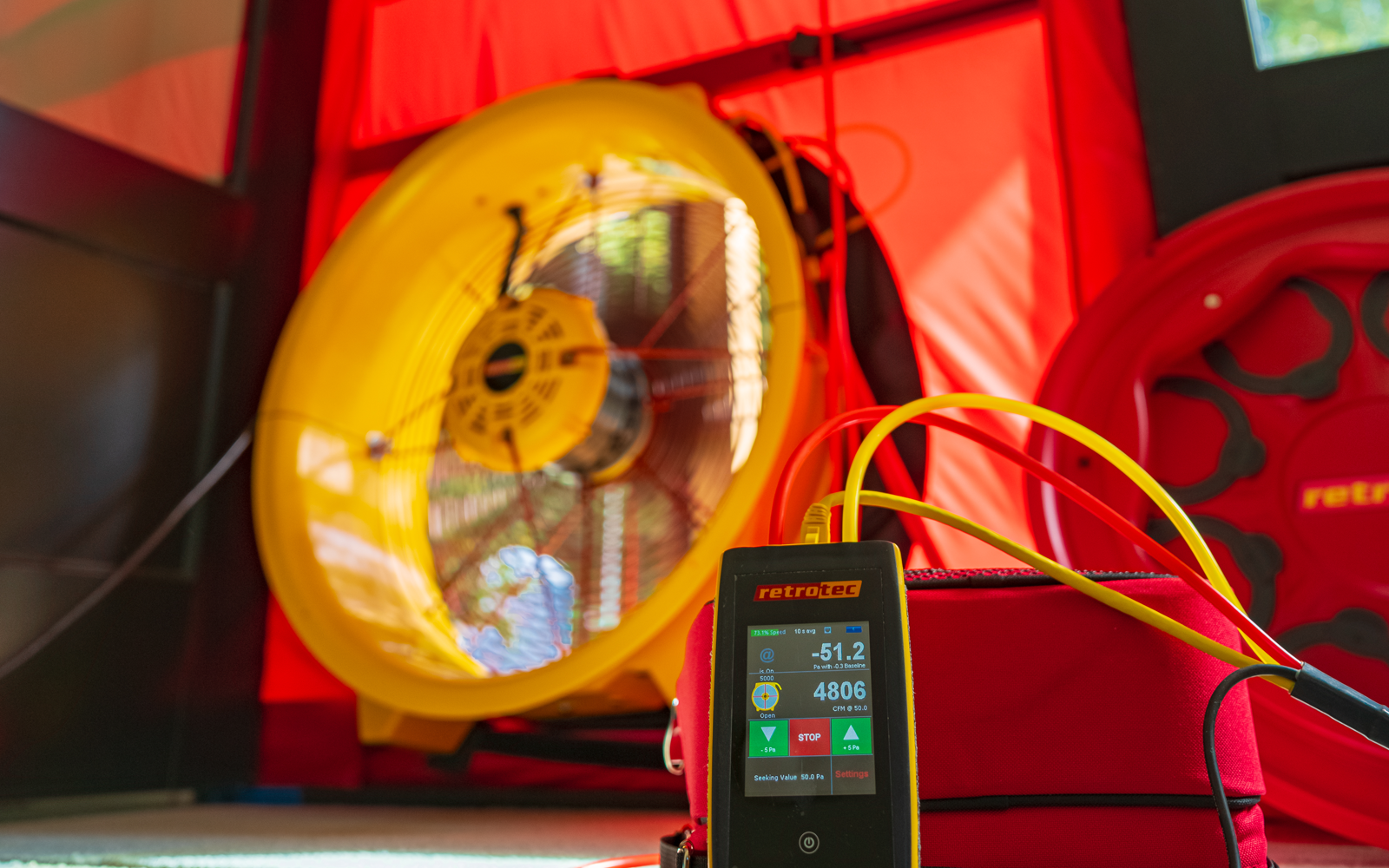As energy efficiency becomes a top priority for homebuyers, the Home Energy Rating System® (HERS) has emerged as a critical benchmark in evaluating home performance. A 2023 survey by the National Association of Realtors revealed that energy-efficient features are "very important" to today’s buyers, with 31% ranking heating and cooling costs as their biggest concern. The Residential Energy Services Network (RESNET®) reported that over 360,000 homes were HERS rated in 2023, showing just how essential energy-efficient construction has become. These homes are projected to save $296 million annually in energy bills and cut carbon emissions by more than 1.6 million tons.
For builders, constructing homes with low HERS scores not only satisfies consumer demand but also meets increasingly stringent IECC code requirements. More importantly, builders who actively highlight a home's energy performance can set themselves apart in a competitive market, using this feature as a selling point to attract buyers who are prioritizing sustainability and long-term savings.
The Buyer Appeal of a Low HERS Score
Homebuyers are now more informed and discerning when it comes to energy efficiency, and a low HERS score speaks directly to their priorities. HERS, developed by RESNET, is a standardized rating that measures a home’s energy use by evaluating insulation, air leakage, window efficiency, HVAC systems, and more. The HERS index uses a scale where a standard new home scores 100. Each point represents a 1% difference in energy efficiency compared to this baseline. For instance, a home with a HERS score of 80 is 20% more energy-efficient than a typical new build.
For builders, this score is a powerful marketing tool. It provides potential buyers with a clear, easy-to-understand snapshot of how a home performs in terms of energy use, comfort, and cost savings. Homes with low HERS scores are more attractive to buyers for several key reasons:
- Lower Operating Costs: A home with a lower HERS score will consume less energy, leading to substantial savings on heating, cooling, and electricity bills. On average, a HERS-rated home scores 57, which translates to an estimated $718 in annual energy savings. Highlighting these long-term savings is a great way to attract cost-conscious buyers.
- Comfort and Indoor Air Quality: A lower HERS score often indicates better insulation, reduced air leakage, and more efficient HVAC systems, all of which contribute to consistent indoor temperatures and improved air quality. Buyers are willing to pay a premium for homes that offer enhanced comfort throughout the seasons.
- Environmental Impact: Homes with low HERS scores produce fewer greenhouse gases, which resonates with environmentally conscious buyers. With the rise of sustainability-minded consumers, builders can capitalize on the growing demand for eco-friendly homes.
- Resale Value: Energy-efficient homes tend to hold their value better over time, and the HERS score provides a standardized metric for future buyers to assess home performance. Homes with lower HERS scores are more likely to command a higher resale value, making them an attractive investment.
Builders can use these selling points to actively promote their homes as energy-efficient, sustainable, and cost-effective, helping to draw in buyers who may not have previously considered energy performance in their purchasing decisions.
How Builders Benefit from Low HERS Scores
From a builder’s perspective, a low HERS score can be a critical differentiator in the market. As energy efficiency becomes more important to consumers, builders who deliver homes with superior energy performance stand out in a competitive landscape. This focus on energy performance can translate into:
- Increased Buyer Interest: With a growing number of homebuyers looking for energy-efficient homes, advertising lower HERS scores can attract a larger pool of potential buyers. Energy performance is not just a technical aspect; it’s a selling point that resonates with modern consumers who value long-term financial savings and environmental responsibility.
- Higher Sales Prices: Homes with low HERS scores often justify higher prices due to their lower operating costs and enhanced comfort. Builders can leverage the HERS score to position their homes as premium offerings, allowing them to achieve better profit margins.
- Meeting and Exceeding Code Requirements: Many states now mandate increasingly stringent energy codes, and low HERS scores help builders stay ahead of these requirements. Builders who prioritize energy efficiency are better positioned to meet the evolving standards and avoid costly retrofits or penalties down the road.
- Rebates and Incentives: Many regions offer rebates, tax credits, and other financial incentives for energy-efficient construction. Builders who achieve low HERS scores can take advantage of these programs, further improving their bottom line.
Integrated Products That Streamline HERS Compliance and Reduce Labor Costs
Manufacturers are developing products that help builders achieve low HERS scores without increasing the complexity of the building process. One key innovation is the integration of continuous insulation (CI) and weather-resistive barriers (WRBs), which work together to enhance energy performance.
CI provides an uninterrupted layer of insulation across the building envelope, minimizing thermal bridging and heat loss. WRBs protect against moisture and air infiltration while allowing vapor to escape, preventing condensation. Together, CI and WRBs contribute to the air tightness, water tightness, and thermal integrity of a home—key factors in lowering a HERS score.
An example of this is Blueskin® VPTech™ from Henry®, an integrated building envelope solution combining Type II R5 graphite polystyrene (GPS) continuous insulation with a self-sealing WRB in one lightweight panel. Blueskin VPTech can help lower a home’s HERS® (Home Energy Rating System) Score and contribute to ENERGY STAR and Zero Energy Ready Home (ZERH) program requirements. Independent blower door testing confirms a 74% reduction in air changes per hour, down to 1.5 ACH50, when installed in conjunction with an unvented attic with open cell spray foam.
BlueSkin VPTech also saves time and labor by streamlining installation process by reducing the steps needed to install and seal CI and WRB separately. Builders can cut the number of trips around the home from three down to one, speeding up project timelines and lowering labor costs. Blueskin VPTech’s pre-applied seam-sealing overlays further simplify installation. Builders only need to remove the tape’s release liner and press it into place, creating an air- and watertight seal. This quick, hassle-free installation makes Blueskin VPTech an attractive option for builders looking to reduce labor demands while achieving the energy performance buyers want.
Using Energy Performance to Attract Buyers
Marketing homes with lower HERS scores can help builders gain a competitive edge. Energy-efficient homes attract eco-conscious buyers and those seeking lower energy bills, making them a key differentiator in the market. Builders can enhance their reputation by consistently delivering homes that prioritize sustainability and long-term energy savings, which are becoming top criteria for buyers.
By leveraging integrated products like Blueskin VPTech, builders can not only meet energy efficiency standards but also use HERS scores as a marketing advantage. Highlighting a home's energy performance during the sales process offers a clear value proposition to buyers, helping builders stand out in a crowded marketplace and build long-term trust with clients.








